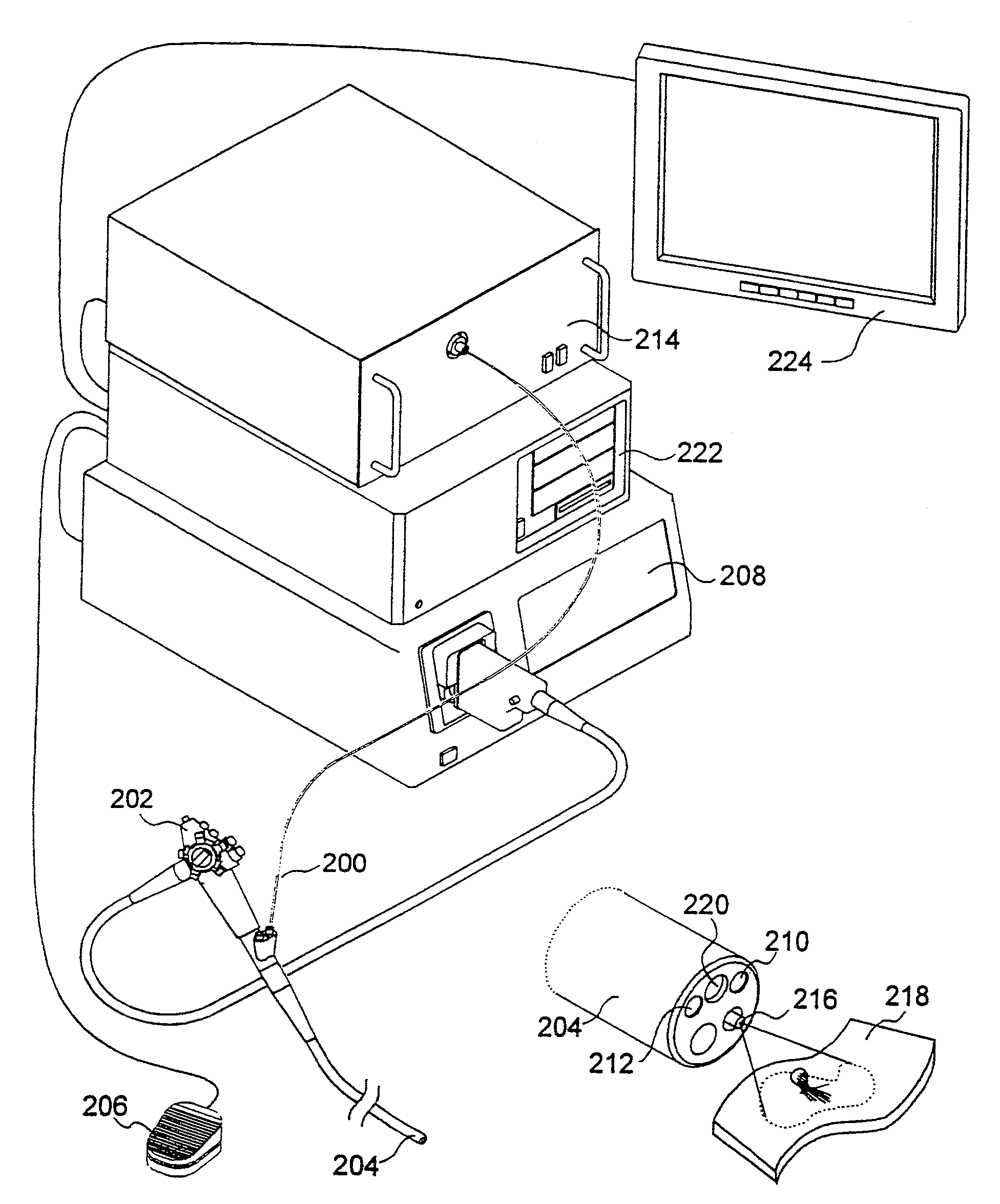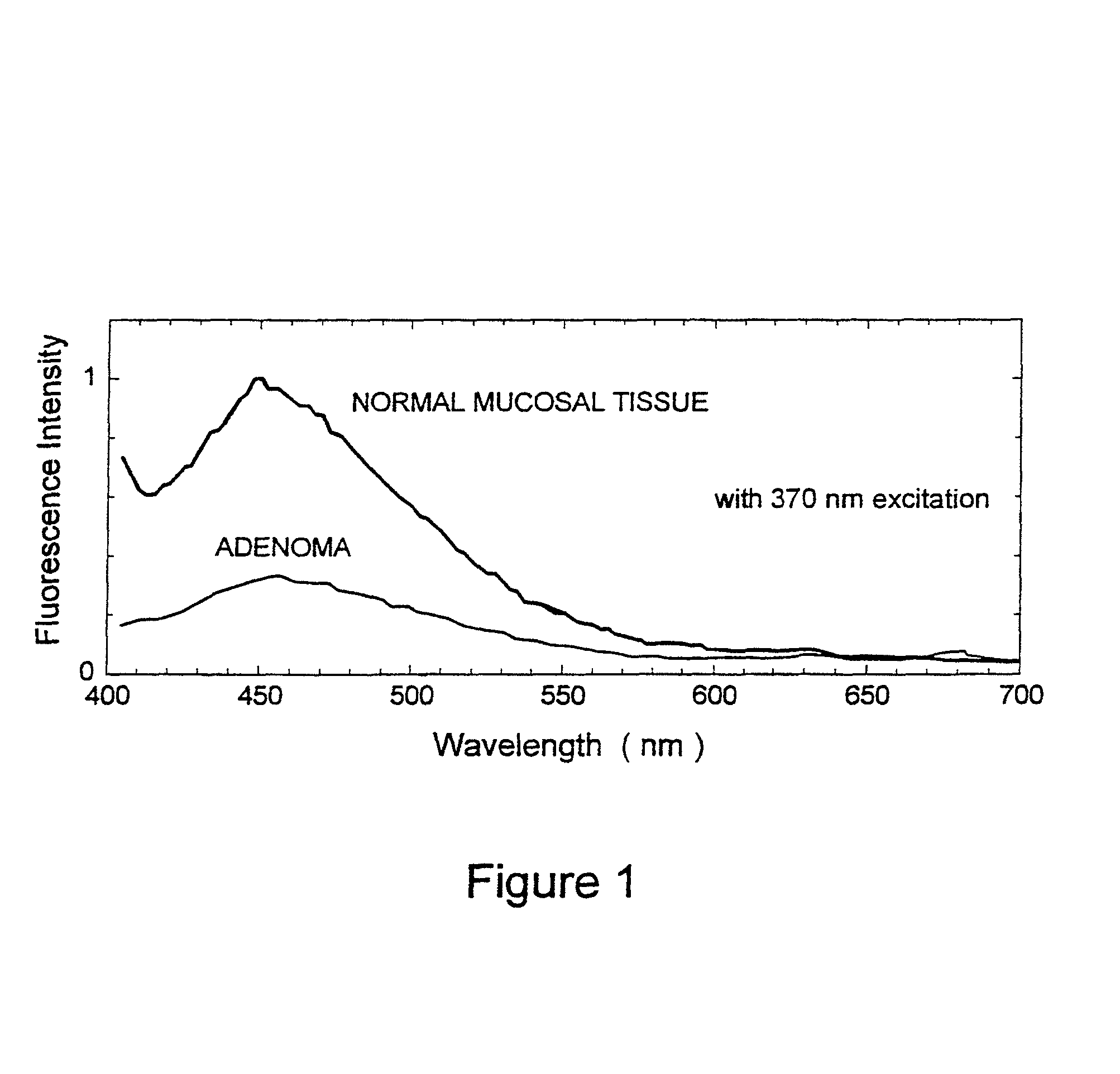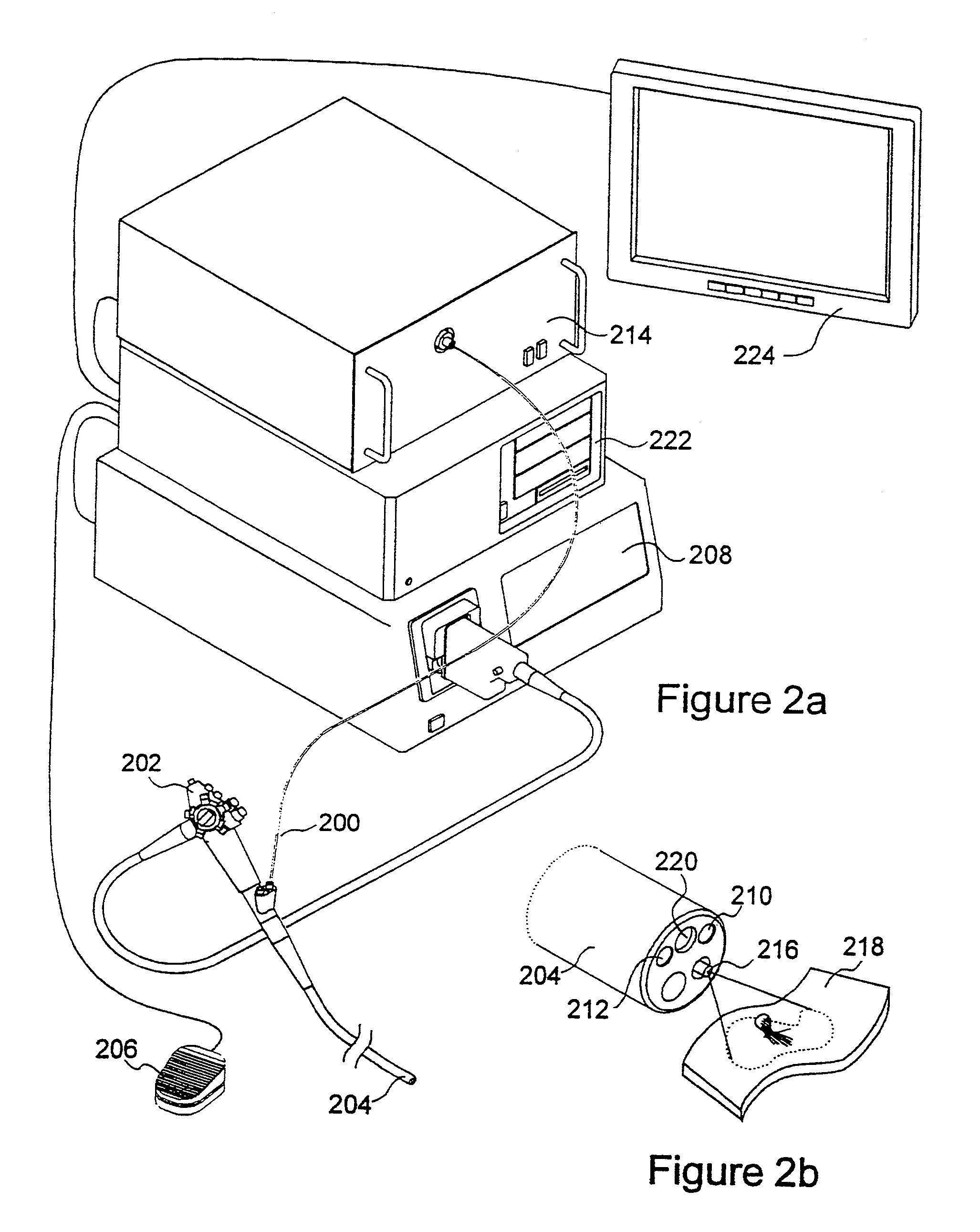Autofluorescence imaging system for endoscopy
- Summary
- Abstract
- Description
- Claims
- Application Information
AI Technical Summary
Benefits of technology
Problems solved by technology
Method used
Image
Examples
Embodiment Construction
[0027]The present invention relates to systems and methods for imaging autofluorescence from epithelial tissue to highlight regions of dysplasia. The tissue autofluorescence imaging system in accordance with the present invention improves upon the previous state of the art in that, in its simplest form, it can be added on to an existing video endoscope system with no modifications to the endoscope itself, and with only the addition of a shutter in the optical path of the endoscope's visible light source. The handling characteristics of the endoscope are thus not adversely affected by the addition of image intensifiers and external cameras at the proximal end as required by fluorescence imaging systems currently on the market. Switching between normal visible light imaging, in full color, and fluorescence imaging is accomplished by an electronic switch rather than a physical manipulation by the clinician, also required by current systems. The resulting fluorescence video image is pro...
PUM
 Login to View More
Login to View More Abstract
Description
Claims
Application Information
 Login to View More
Login to View More - R&D
- Intellectual Property
- Life Sciences
- Materials
- Tech Scout
- Unparalleled Data Quality
- Higher Quality Content
- 60% Fewer Hallucinations
Browse by: Latest US Patents, China's latest patents, Technical Efficacy Thesaurus, Application Domain, Technology Topic, Popular Technical Reports.
© 2025 PatSnap. All rights reserved.Legal|Privacy policy|Modern Slavery Act Transparency Statement|Sitemap|About US| Contact US: help@patsnap.com



